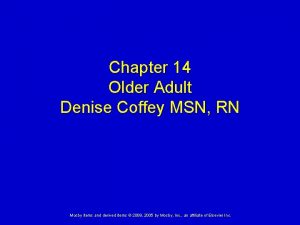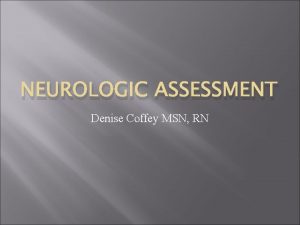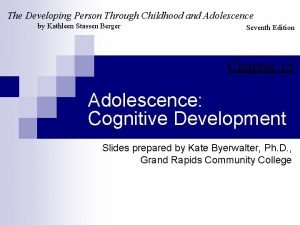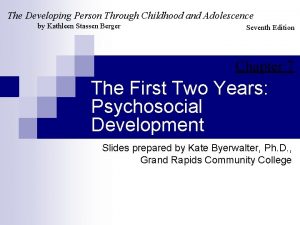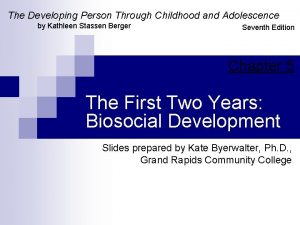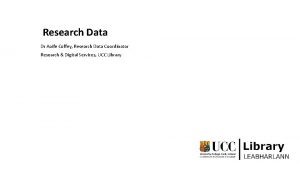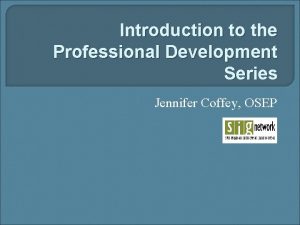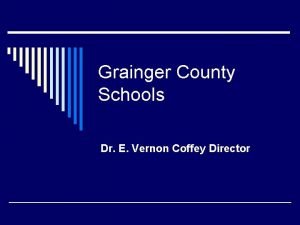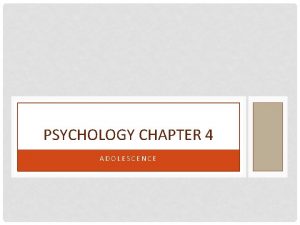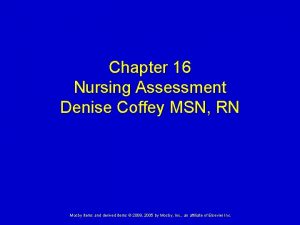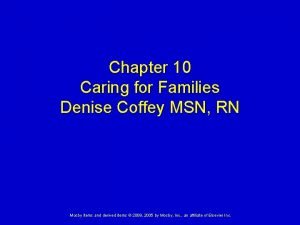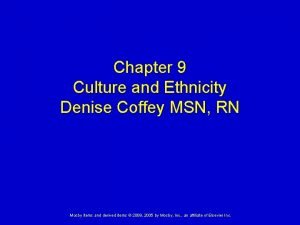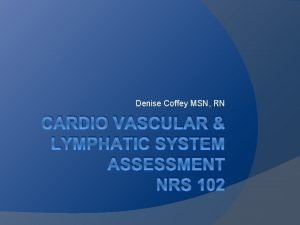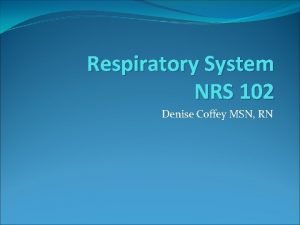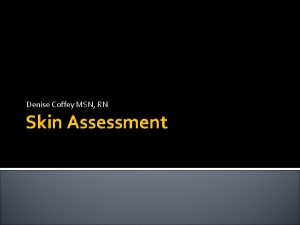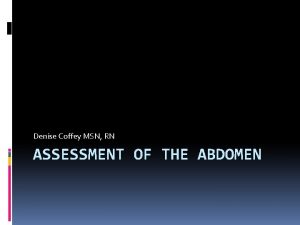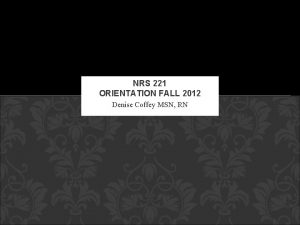Chapter 12 Conception Through Adolescence Denise Coffey MSN












- Slides: 12

Chapter 12 Conception Through Adolescence Denise Coffey MSN, RN Mosby items and derived items © 2009, 2005 by Mosby, Inc. , an affiliate of Elsevier Inc.

Stages of Growth and Development Human growth and development are continuous and complex. Growth and development are based on timing and sequence of developmental tasks. Mosby items and derived items © 2009, 2005 by Mosby, Inc. , an affiliate of Elsevier Inc. 2

Selecting a Developmental Framework for Nursing An organized, systematic approach ensures that a care plan will meet the needs of the child and family. A developmental approach helps nurses plan and organize care according to the child’s developmental stage. Mosby items and derived items © 2009, 2005 by Mosby, Inc. , an affiliate of Elsevier Inc. 3

Conception From the moment of conception, human development proceeds rapidly. Intrauterine life First trimester Second trimester Third trimester Mosby items and derived items © 2009, 2005 by Mosby, Inc. , an affiliate of Elsevier Inc. 4

Transition From Intrauterine to Extrauterine Life Major physiological changes Psychosocial changes Health risks Mosby items and derived items © 2009, 2005 by Mosby, Inc. , an affiliate of Elsevier Inc. 5

Newborn Neonatal period Physical changes Ø Cognitive changes Ø Psychosocial changes Ø Health risks Ø Mosby items and derived items © 2009, 2005 by Mosby, Inc. , an affiliate of Elsevier Inc. 6

Infant 1 month old to 1 year old Physical changes Ø Cognitive changes Ø Psychosocial changes Ø Health risks Ø Mosby items and derived items © 2009, 2005 by Mosby, Inc. , an affiliate of Elsevier Inc. 7

Toddler 12 to 36 months Physical changes Ø Cognitive changes Ø Psychosocial changes Ø Health risks Ø Mosby items and derived items © 2009, 2005 by Mosby, Inc. , an affiliate of Elsevier Inc. 8

Preschooler 3 to 5 years old Physical changes Ø Cognitive changes Ø Psychosocial changes Ø Health risks Ø Mosby items and derived items © 2009, 2005 by Mosby, Inc. , an affiliate of Elsevier Inc. 9

School-Age Children and Adolescents 6 to 18 years old Expansion, development, and refinement of physical, psychosocial, cognitive, and moral skills Ø Boundaries include family, school, community, and church Ø Play and work with others Ø Mosby items and derived items © 2009, 2005 by Mosby, Inc. , an affiliate of Elsevier Inc. 10

School-Age Child 6 to 12 years old Physical changes Ø Cognitive changes Ø Psychosocial changes Ø Health risks Ø Mosby items and derived items © 2009, 2005 by Mosby, Inc. , an affiliate of Elsevier Inc. 11

Adolescence 13 to 20 years old Physical changes Ø Cognitive changes Ø Psychosocial changes Ø Health risks Ø Mosby items and derived items © 2009, 2005 by Mosby, Inc. , an affiliate of Elsevier Inc. 12
 Denise coffey death
Denise coffey death Denise coffey
Denise coffey Conception générale et détaillée
Conception générale et détaillée The developing person through childhood and adolescence
The developing person through childhood and adolescence Fast mapping
Fast mapping The developing person through childhood and adolescence
The developing person through childhood and adolescence The developing person through childhood and adolescence
The developing person through childhood and adolescence Research data management
Research data management Is jennifer coffey engaged
Is jennifer coffey engaged Adam coffey
Adam coffey Vernon coffey
Vernon coffey Chapter 4 adolescence psychology
Chapter 4 adolescence psychology Chapter 4 adolescence psychology
Chapter 4 adolescence psychology
